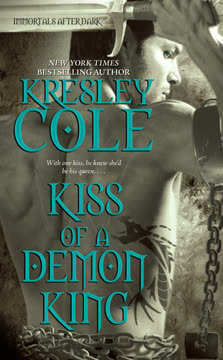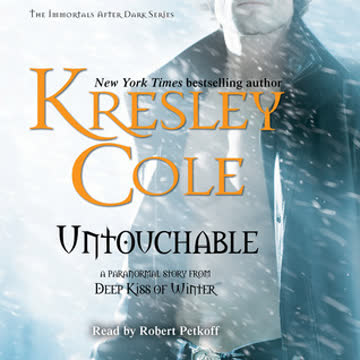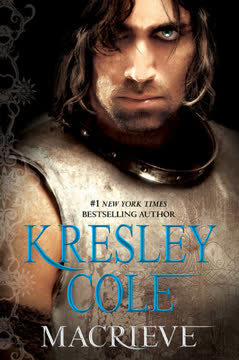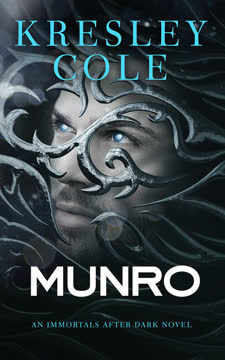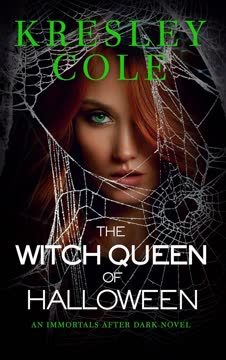Plot Summary
Exile and Betrayal
Thirteen-year-old Calliope "Lila" Barbot, princess of the Sylvan fey, faces a public trial after her parents' failed coup against King Saetth—her cousin and betrothed. Instead of execution, Saetth exiles her to the mortal realm, stripping her of power, family, and home. Lila's exile is a calculated move, both punishment and test, as Saetth promises she may return only after proving her loyalty through great personal sacrifice. Alone and vulnerable, Lila is forced to adapt to a world that neither understands nor welcomes her, her royal upbringing clashing with the chaos of human life. The seeds of resentment, longing, and a fierce will to survive are sown, setting her on a path where love, vengeance, and destiny will collide.
Hiding in Plain Sight
Years later, Lila survives by blending into the human world, working as a "face character" at Disney World, ironically playing a fairy princess. She lives in constant fear—hunted by the Møriør's archer, Rune, who is exterminating her bloodline. Lila's isolation is total: no friends, no love, only the hope of one day returning home. Her senses and desires intensify as she nears her immortal transition, but her life is a lonely masquerade. When Saetth and the enigmatic Valkyrie Nïx appear, they offer her a chance to return—if she'll spy on the Møriør's demon king, Abyssian Infernas, her fated mate. Torn between longing for home and the horror of seducing a monster, Lila agrees, setting in motion a dangerous game of deception.
The Devil's Bargain
Lila is thrust into a plot orchestrated by Nïx: she must infiltrate hell, seduce Abyssian, and uncover the Møriør's secrets. The plan is fraught with peril—Abyssian is the primordial demon king, infamous for his power and cruelty, and Lila is his fated mate, a bond she refuses to accept. The mission is a test of loyalty, identity, and survival, with the fate of her people hanging in the balance. Lila's sacrifice is demanded not just by Saetth, but by destiny itself. As she steels herself for the role of spy and seductress, she is haunted by the knowledge that her every move may be manipulated by forces far greater than herself.
Captured by Hell
Lila's "capture" is arranged by Sorceri bounty hunters, who deliver her to Abyssian in Pandemonia—hell itself. The demon king, monstrous in form and mind, imprisons her in a crumbling tower, intent on exacting vengeance for betrayals in a past life. Lila is forced to endure humiliating and impossible tasks, her every attempt at resistance met with cruelty and dominance. Yet, beneath the surface, a strange connection simmers—Abyssian is both tormentor and protector, his hatred for her tangled with an undeniable, fated attraction. Lila's wit and defiance become her weapons, as she plots escape and survival in a world designed to break her.
The Demon King's Prisoner
Abyssian's obsession with Lila is fueled by memories of betrayal—he believes she is the reincarnation of Karinna, the fey princess who once destroyed him. He subjects her to psychological and physical trials, testing her limits and his own. Lila, refusing to be cowed, matches his cruelty with cunning, setting traps and exploiting every weakness she can find. Their confrontations are electric, a battle of wills where hatred and desire blur. As Lila's immortality awakens, so does her power, and the lines between captor and captive, enemy and lover, begin to dissolve in the fires of hell.
Spinning Webs, Spinning Lies
Forced to spin poisonous spider webs and clean a tower of sexual relics, Lila endures grueling labor designed to break her spirit. She faces her deepest fears, using intelligence and adaptability to turn punishment into opportunity. Each task is a lesson in the demon king's psychology and the rules of hell. Lila's resourcefulness grows, as does her understanding of the true nature of power in Pandemonia. The web she spins is not just of silk, but of lies, alliances, and the beginnings of a new identity—one that may yet rival the king's own.
Clash of Wills
The dynamic between Lila and Abyssian intensifies, their interactions a constant push and pull of dominance, seduction, and resistance. Abyssian is both repelled and fascinated by Lila's defiance, while she is drawn to the vulnerability beneath his monstrous exterior. Their mutual attraction becomes undeniable, manifesting in charged encounters that blur the line between pleasure and punishment. Each seeks to outwit and outlast the other, but the fated bond between them grows stronger, threatening to consume them both in a conflagration of lust and longing.
Past Lives, Present Hatred
Abyssian's hatred is rooted in ancient betrayal—Karinna, Lila's past incarnation, once destroyed his trust and mutilated his body. Flashbacks reveal a tragic love story twisted by politics, prejudice, and pride. Lila, grappling with the possibility of reincarnation, is forced to confront the sins of a life she cannot remember. The past haunts the present, poisoning every interaction and fueling a cycle of vengeance and regret. Yet, as truths are unearthed, both must decide whether to be defined by history or to forge a new destiny together.
Escape Plans and Traps
Lila's relentless drive to escape leads her to exploit every resource in her prison. She builds immunity to hell's poisons, crafts weapons from her meager possessions, and sets elaborate traps for her captor. Her efforts culminate in a daring attempt to flee, but Abyssian's power and the living magic of the castle thwart her at every turn. The struggle for freedom becomes a crucible, forging Lila's resolve and forcing Abyssian to confront the limits of his control. Their battle is not just for dominance, but for the right to define their own fates.
The Demon's Obsession
Abyssian's surveillance of Lila becomes an addiction, his need for her eclipsing his desire for revenge. He is tormented by lust, jealousy, and the fear of losing her again. Lila, in turn, is both repelled and seduced by his intensity, her own desires awakening in the crucible of captivity. Their encounters grow increasingly intimate, each testing the boundaries of trust and surrender. The demon king's monstrous form becomes both a barrier and a lure, as Lila begins to see the man beneath the beast—and the possibility of love in the heart of hell.
A Test of Endurance
Days of deprivation, labor, and psychological warfare push Lila to her limits. She survives not through brute strength, but through adaptability, intelligence, and an unbreakable will. The castle itself seems to test her, offering both obstacles and opportunities. As Lila's immortality fully awakens, so does her power over her environment—and over Abyssian. The balance of power shifts, and the seeds of mutual respect and attraction take root. Both are changed by the ordeal, emerging stronger, more dangerous, and more entwined than ever before.
Seduction and Defiance
The tension between Lila and Abyssian erupts in a series of passionate, defiant encounters. Seduction becomes a battleground, each seeking to claim and be claimed. The fated bond between them is consummated in a blaze of pleasure and pain, breaking the last barriers between enemy and lover. Yet, even as they surrender to each other, secrets and lies threaten to destroy their fragile trust. The past looms, and the price of love in hell is steep—requiring sacrifice, forgiveness, and the courage to face the truth.
The Queen's Gambit
Betrayed and imprisoned once more, Lila discovers the true extent of her power—she is not just a pawn, but a queen in her own right. The hellfire anoints her, granting her dominion over Pandemonia. With newfound magic and authority, she locks Abyssian out of his own realm, seizing control and setting her sights on reclaiming her birthright in Sylvan. Lila's transformation from victim to ruler is complete; she is no longer content to survive—she will conquer, avenge, and rule.
The Hellfire's Gift
Guided by visions and the living magic of the castle, Lila embraces her destiny as queen of both hell and Sylvan. She forges alliances, claims the legendary scepter, and prepares to challenge Saetth for the throne. The hellfire's gift is not just power, but clarity—a vision of a future where she is no longer defined by exile, betrayal, or fear. Lila's journey from pawn to queen is a testament to resilience, cunning, and the transformative power of self-acceptance.
The Dungeon and the Diamond
Abyssian, wracked by guilt and longing, confronts his own failings and the true meaning of love. He seeks forgiveness, not just from Lila, but from himself, and is rewarded with the restoration of his former self. Their reunion is hard-won, built on honesty, vulnerability, and the willingness to let go of the past. The diamond, a symbol of their bond, becomes a promise of a future forged in fire and tempered by forgiveness. Together, they reclaim their thrones, their love, and their destinies.
The Coup in Sylvan
Lila returns to Sylvan, confronting Saetth in a dramatic coup. Using the poisoned scepter and the lessons of hell, she defeats him not through brute force, but through intelligence and strategy. The court is stunned as the exiled princess claims her birthright, uniting the realms of hell and Sylvan under her rule. Abyssian, wounded but unbowed, stands by her side, their partnership a testament to the power of love, resilience, and the refusal to be defined by the past.
Forgiveness and Fury
In the aftermath of the coup, Lila and Abyssian confront the final obstacles to their happiness—old wounds, lingering distrust, and the specter of vengeance. Through confession, forgiveness, and the forging of new alliances, they lay the foundation for a future where love, power, and destiny are intertwined. Their union is not just a personal victory, but a political and magical one, reshaping the balance of power in the Lore and heralding a new era for both fey and demonkind.
The True Queen Rises
Lila, now queen of both Pandemonia and Sylvan, rules with Abyssian at her side. Their love, hard-won and tested by fire, becomes the cornerstone of a new alliance—one that promises peace, prosperity, and the possibility of redemption for even the most broken souls. The story ends not with a simple happily ever after, but with the promise of ongoing challenges, growth, and the enduring power of hope. The queen who was once exiled, betrayed, and broken now stands as a beacon of strength, cunning, and love—a true queen risen from the abyss.
Characters
Calliope "Lila" Barbot
Lila is the heart of the story—a fey princess exiled for her parents' treason, forced to survive in the mortal world by hiding her true nature. Her journey is one of transformation: from powerless pawn to cunning survivor, from captive to queen. Lila's defining traits are her adaptability, intelligence, and fierce will; she refuses to be broken by exile, captivity, or betrayal. Her psychological arc is marked by the struggle to reconcile her past (and possible reincarnation as Karinna) with her present, and to claim agency over her destiny. Her relationship with Abyssian is fraught with mistrust, passion, and ultimately, hard-won love. Lila's development is a testament to resilience, self-acceptance, and the courage to seize power on her own terms.
Abyssian "Sian" Infernas
Abyssian is the primordial king of Pandemonia, a member of the Møriør, and the story's dark, complex hero. Scarred by ancient betrayal, he is both monstrous and vulnerable, driven by a need for vengeance and a longing for love. His psychological journey is one of obsession, self-loathing, and eventual redemption. Abyssian's relationship with Lila is a crucible—she is both his greatest torment and his salvation. His struggle to forgive, to let go of the past, and to accept love is mirrored in his physical transformation, culminating in the restoration of his true self. Abyssian's arc is a meditation on the destructive power of hatred and the healing power of forgiveness.
Saetth
Saetth is Lila's cousin, betrothed, and the king of Sylvan. He is a master manipulator, using exile, promises, and political machinations to maintain power. Saetth's relationship with Lila is complex—part familial, part romantic, ultimately exploitative. His willingness to sacrifice Lila for his own ends sets the story in motion, and his eventual downfall is a testament to the dangers of pride, cowardice, and underestimating those he seeks to control. Saetth's arc is that of the false king, undone by his own schemes.
Nïx the Ever-Knowing
Nïx is the enigmatic Valkyrie who orchestrates much of the plot from behind the scenes. Her motives are inscrutable, her actions both helpful and harmful. Nïx's role is that of the cosmic chessmaster, moving pieces for reasons known only to herself. She embodies the theme of fate versus free will, and her interventions force the characters to confront their destinies, often at great personal cost. Nïx's presence is a reminder that in the Lore, nothing is ever as it seems.
Rune Darklight
Rune is the Møriør's archer, sworn to exterminate Lila's bloodline in vengeance for ancient wrongs. He is both a looming threat and a symbol of the inescapable past. Rune's relationship to Lila is that of hunter and prey, but his own arc is one of transformation—eventually, he must confront the limits of vengeance and the possibility of forgiveness. Rune's presence heightens the stakes, forcing Lila and Abyssian to unite or perish.
Uthyr
Uthyr is Abyssian's ally, a dragon shifter who provides guidance, comic relief, and a measure of perspective. He is both a participant in and a commentator on the events of the story, often serving as a sounding board for Abyssian's doubts and schemes. Uthyr's psychological role is that of the mentor, urging growth, self-reflection, and the pursuit of happiness. His own quirks and wisdom add depth to the world and highlight the importance of chosen family.
Karinna (Kari)
Karinna is Lila's possible previous incarnation, the fey princess whose betrayal scarred Abyssian for millennia. Her actions in the past—real or perceived—cast a long shadow over the present, shaping the motivations, fears, and desires of both main characters. Karinna's legacy is one of pain, but also of possibility; her story is a cautionary tale about the dangers of pride, prejudice, and the refusal to forgive.
Josephine
Josephine is Rune's mate, a powerful and unconventional figure who embodies the possibility of love across boundaries. Her relationship with Rune serves as a counterpoint to Lila and Abyssian's, highlighting the themes of acceptance, transformation, and the breaking of curses. Josephine's presence in the story is a reminder that happiness is possible, even for the most cursed and broken.
Melanthe and Sabine
Melanthe and Sabine are the bounty hunters who deliver Lila to Abyssian, setting the main plot in motion. Their actions are driven by self-interest, but they also serve as catalysts for Lila's transformation. The sisters embody the unpredictable nature of the Lore, where alliances shift and survival often depends on cunning and adaptability.
The Living Castle (Graven)
Graven, the living castle of Pandemonia, is more than a backdrop—it is a character in its own right. Its shifting rooms, magical interventions, and tests of worthiness shape the destinies of those within. Graven's psychological role is that of the judge, rewarding resilience, punishing weakness, and ultimately anointing Lila as queen. The castle's magic is a metaphor for the unpredictable, often harsh, but ultimately just nature of fate.
Plot Devices
Fate and Reincarnation
The narrative is driven by the concept of fated mates, reincarnation, and the cyclical nature of love and betrayal. Lila and Abyssian are bound by a destiny that transcends lifetimes, their present struggles echoing ancient wounds. The story uses reincarnation as both a curse and a chance for redemption, forcing characters to confront the past and choose whether to be defined by it or to break free. Fate is both a plot engine and a psychological force, shaping motivations, fears, and desires.
Power Dynamics and Role Reversal
The story is structured around constant reversals of power: Lila is exiled, then a captive, then a queen; Abyssian is a tormentor, then a lover, then a supplicant. The living castle, magical artifacts, and the rules of hell all serve to upend expectations and force characters to adapt. The use of imprisonment, escape, and magical tests highlights the theme that true power lies not in brute strength, but in intelligence, adaptability, and the willingness to forgive.
Foreshadowing and Symbolism
The story is rich with foreshadowing—visions, dreams, and magical interventions hint at future events and hidden truths. The hellfire, the diamond, the scepter, and the living castle are all symbols of transformation, power, and the possibility of redemption. The recurring motif of the fawn, the use of enchanted objects, and the interplay of light and darkness all serve to deepen the psychological resonance of the narrative.
Duality and Transformation
The narrative structure mirrors the psychological journeys of the characters: both Lila and Abyssian are transformed by their experiences, shedding old identities and embracing new ones. The use of physical transformation (Abyssian's hell-change, Lila's awakening) is paralleled by emotional and moral growth. The story's structure—alternating between captivity and freedom, hatred and love, past and present—reinforces the theme that true change is possible, but only through pain, sacrifice, and the courage to face oneself.
Political Intrigue and Personal Stakes
The plot is driven by political machinations—exile, coups, alliances, and betrayals—but the true stakes are always personal. The fate of kingdoms is intertwined with the fate of hearts; love and power are inseparable. The use of court politics, magical bargains, and shifting alliances creates a sense of constant tension and unpredictability, mirroring the psychological turmoil of the main characters.
Analysis
Wicked Abyss is a dark, lush, and psychologically rich reimagining of the "Beauty and the Beast" myth, set in a universe where fate, power, and love are inextricably linked. At its core, the novel is about transformation—of self, of relationships, and of the world. Through the intertwined journeys of Lila and Abyssian, the story explores the destructive power of hatred, the corrosive effects of old wounds, and the redemptive potential of forgiveness. The narrative interrogates the nature of destiny: are we doomed to repeat the mistakes of the past, or can we break free and forge a new future? The answer, the novel suggests, lies in the willingness to adapt, to forgive, and to claim agency over one's own story. Lila's evolution from exiled pawn to queen of hell is a testament to resilience, cunning, and the refusal to be defined by others' expectations. Abyssian's journey from vengeful monster to loving partner is a meditation on the healing power of vulnerability and the courage to let go of the past. Together, they embody the possibility of a love that is not perfect, but hard-won, honest, and transformative. Wicked Abyss ultimately argues that true power is not in domination, but in partnership; not in vengeance, but in mercy; not in fate, but in the choices we make to love, forgive, and rise from the abyss.
Last updated:
Review Summary
Wicked Abyss receives mostly positive reviews, with readers praising Cole's creativity, world-building, and steamy romance. Many enjoy the Beauty and the Beast retelling featuring Abyssian and Lila's enemies-to-lovers story. Some criticize the introduction of new characters instead of focusing on familiar ones, while others appreciate the fresh perspective. Fans particularly love Lila's strength and Sian's complexity. The book's humor, sexual tension, and plot twists keep readers engaged, though some find the middle section repetitive. Overall, it's considered a solid addition to the Immortals After Dark series.
Immortals After Dark Series






